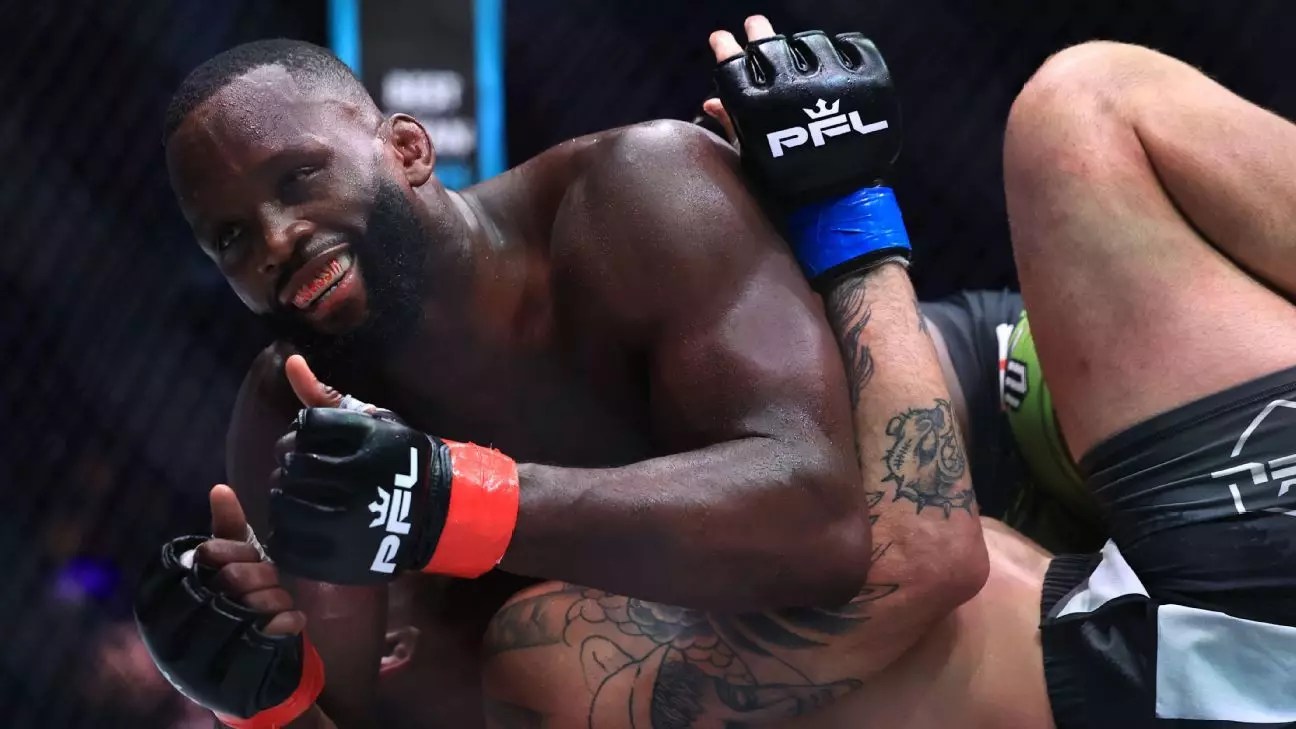The Professional Fighters League’s (PFL) 2025 season reaches a crescendo this Thursday, transforming Hollywood, Florida into a battleground where future MMA legends will be forged. Unlike the UFC or Bellator, the PFL operates on a distinctive tournament format, which culminates every season with a final event that rewards fighters with not only prestige but also substantial financial incentives. This structure ensures that the stakes are extraordinarily high, with each fighter fighting not just for victory but for their legacy and livelihood. The upcoming event symbolizes a pivotal moment for the sport, emphasizing consistency, resilience, and strategic mastery—qualities that often get overshadowed in the more promotional-centric models of other organizations.
What sets the 2025 finals apart is the diversity of talent—ranging from seasoned veterans to emerging contenders—and the intense narratives that have built up over the season. The event is more than just a tournament finale; it is a testament to the evolution of MMA, where fighters are meticulously crafted through grueling tournament formats that test every aspect of their game. The championships are a microcosm of the sport’s progression, and their outcome carries implications that could ripple through the MMA world for years. The rising prominence of the PFL, with its focus on seasonal tournaments and cash prizes, signals a shift toward a more compelling athlete-centric model, pushing fighters to innovate and elevate their performance under the brightest lights.
Analyzing the Semifinal Journeys: Strategies, Rivalries, and Personalities
The path to the finals is often as revealing as the final fight itself, showcasing fighters’ strategic evolution, mental toughness, and sometimes, their capacity for redemption. Fabian Edwards’s journey exemplifies this. As a two-time Bellator middleweight title challenger, Edwards brings a wealth of championship experience and high-level competition familiarity. His second-round TKO over Impa Kasanganay and subsequent decision victory over Josh Silveira displayed his precision striking and ring intelligence. Despite setbacks in title bouts, Edwards’s resilience and championship mindset could be the X factor that propels him to ultimate victory, fundamentally questioning the notion that previous losses define a fighter’s future.
Meanwhile, Dalton Rosta’s unbeaten record—despite being just at the beginning of his championship quest—poses a compelling narrative. He has yet to taste defeat, and his aggressive style and relentless ground game have made him a formidable threat. Rosta’s confidence is built not only on his record but on his ability to adapt and exact revenge, demonstrated against Aaron Jeffery. However, critics may argue that his limited experience at this high level could be a vulnerability when facing Edwards’s seasoned approach. The dynamic between these two fighters is as much psychological as physical, with each trying to impose dominance and fuel their personal narratives of perseverance and superiority.
Transitioning to the heavyweight bout, Alexander Romanov and Oleg Popov illustrate contrasting fighting philosophies—Romanov’s aggressive grappling versus Popov’s explosive striking. Romanov, with his 16 finishes, relies heavily on submissions and relentless pressure, while Popov’s striking power and experience in recent fights indicate a potential for dramatic knockouts. The contest hinges on who can impose their game plan early—Romanov pinning Popov on the mat or Popov exchanging strikes that might frustrate Romanov’s grappling attempts. Their clash is not merely about skill but about mental endurance, as both are aware that a single mistake can end the fight.
Lastly, the lightweight final between Sullivan Cauley and Antonio Carlos Jr. exemplifies the clash of contrasting backgrounds—wrestling versus elite Brazilian jiu-jitsu. Cauley’s boxing prowess and elite wrestling background offer a striking and control-based approach, while Carlos Jr.’s submission skill set, complemented by his experience as a two-time jiu-jitsu world champion, indicates a fight that could hinge on positional battles and ground exchanges. Cauley’s challenge is maintaining discipline to fight where he’s strongest—standing—without succumbing to Carlos Jr.’s grappling, which has historically been a cause of concern for many fighters facing elite BJJ practitioners.
Implications and the Future: Who Will Cement Their Legacy?
The 2025 PFL Finals are more than just a night of fights; they are potential new chapters written into the fabric of MMA history. The fighters stepping into these finals have spent months refining their skills, crafting game plans, and overcoming mental hurdles. Success for them isn’t just about holding a belt; it’s about seizing a moment to showcase their identity as fighters and as individuals.
From Edwards’s resilience to Rosta’s unyielding confidence, to Romanov’s grappling dominance, and Cauley’s disciplined striking—each finalist embodies an aspect of what modern MMA demands. Winners of these bouts will not only claim a lucrative prize and a coveted championship belt but also position themselves as serious threats across the broader MMA landscape. Their victories will challenge perceptions, unsettle rankings, and perhaps even inspire future generations.
This event is a window into the evolving narrative of MMA—where diverse fighting styles, strategic innovation, and mental fortitude define greatness. As fighters leave their mark in Hollywood, the ripples

